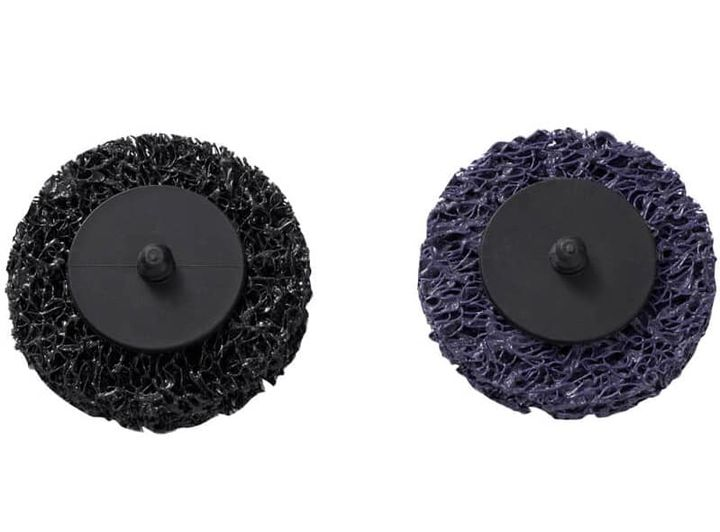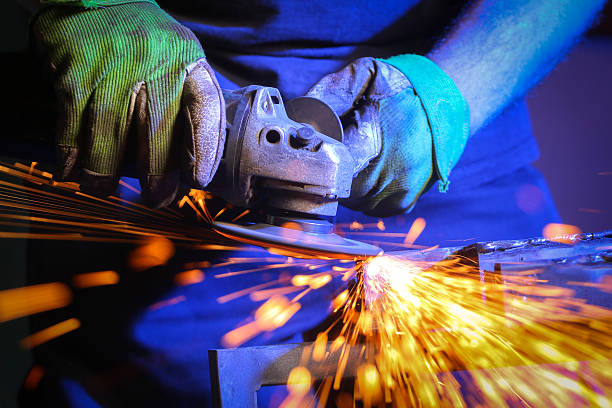Removing paint and rust from metal surfaces is a common task in various industries, from automotive repair to metal fabrication. Achieving a clean, smooth surface is crucial for subsequent processes such as painting, welding, or coating. Stripping and cleaning discs have become the go-to tools for this task due to their efficiency, versatility, and ability to deliver a quality finish without damaging the underlying material. In this article, we will explore the different types of stripping and cleaning discs, their applications, and the best practices for removing paint and rust effectively.
Understanding Stripping and Cleaning Discs
Stripping and cleaning discs are abrasive tools designed to remove paint, rust, and other surface contaminants from metal, wood, and plastic surfaces. They are made from abrasive materials like silicon carbide or aluminum oxide, bonded to a fibrous backing material. These discs come in various shapes and sizes, with different levels of aggressiveness, making them suitable for a wide range of applications.
Key Types of Stripping and Cleaning Discs:
Surface conditioning discs are made from non-woven nylon fibers impregnated with abrasive grains. These discs are designed for light to medium-duty applications, making them ideal for removing surface rust, oxidation, and light paint coatings. They are commonly used in automotive repair, metalworking, and woodworking industries.
Poly strip discs, also known as polycarbide discs, are aggressive and highly durable. They are made from a combination of nylon and silicon carbide, which gives them the ability to remove thick layers of paint, rust, and other coatings without damaging the base material. Poly strip discs are commonly used for heavy-duty applications, such as stripping paint from car bodies, cleaning welds, and removing rust from large metal surfaces.
Fiber discs are made from a rigid backing material coated with abrasive grains. These discs are typically used with an angle grinder and are effective at removing rust and paint from flat or slightly contoured surfaces. Fiber discs come in various grit sizes, allowing for both aggressive material removal and fine finishing.
Flap discs consist of overlapping abrasive flaps attached to a backing plate. They are versatile tools that can be used for both material removal and surface finishing. Flap discs are effective at removing paint and rust while leaving a smooth surface that requires minimal further preparation. They are often used in metalworking, fabrication, and automotive repair.
Roloc discs are small, quick-change discs that are attached to a mandrel via a screw-on mechanism. They are available in various abrasive materials and grit sizes, making them suitable for detailed work, such as rust removal from tight corners or intricate parts. Roloc discs are commonly used in automotive repair, aerospace, and precision metalworking industries.
Preparing for Paint and Rust Removal
Before you start the paint and rust removal process, it’s essential to prepare both the surface and the tools. Proper preparation ensures that the stripping and cleaning discs work effectively and that the underlying material is not damaged.
- Safety First:
Always prioritize safety when working with abrasive tools. Wear appropriate personal protective equipment (PPE), including safety glasses, gloves, a dust mask or respirator, and hearing protection. Ensure that your workspace is well-ventilated to avoid inhaling dust and fumes.
- Inspect the Surface:
Inspect the surface to determine the extent of the paint and rust that needs to be removed. Identify any areas that may require special attention, such as deep rust pits, thick paint layers, or sensitive areas that need to be protected.
- Choose the Right Disc:
Select the appropriate stripping or cleaning disc based on the material you are working with and the level of paint or rust to be removed. For example, use a poly strip disc for heavy-duty paint removal and a surface conditioning disc for light rust removal.
- Tool Setup:
Ensure that your angle grinder or rotary tool is in good working condition. Attach the stripping or cleaning disc securely, and check that the disc is free from defects. Adjust the tool’s speed settings according to the manufacturer’s recommendations for the specific disc you are using.
Step-by-Step Guide to Removing Paint and Rust
Now that you have prepared your tools and the work surface, you can begin the paint and rust removal process. Follow these steps to achieve the best results:
- Start with a Test Area:
Begin by working on a small, inconspicuous area to test the effectiveness of the stripping or cleaning disc. This will help you gauge the disc’s aggressiveness and ensure that it does not damage the underlying material.
- Work in Sections:
Divide the surface into manageable sections, especially if you are working on a large area. This allows you to focus on one section at a time, ensuring even and consistent removal of paint and rust.
- Apply Even Pressure:
When using the stripping or cleaning disc, apply even pressure to avoid gouging the surface. Let the disc do the work—there’s no need to press down too hard. Maintain a steady motion, moving the tool back and forth or in circular patterns, depending on the surface contour.
- Monitor Disc Wear:
Keep an eye on the condition of the disc as you work. Stripping and cleaning discs wear down over time, and a worn disc may lose its effectiveness. Replace the disc as needed to maintain optimal performance.
- Clean as You Go:
Periodically clean the surface with a brush or compressed air to remove loose debris, paint chips, and rust particles. This helps prevent the abrasive disc from clogging and ensures a smoother finish.
- Finish with a Finer Disc (if needed):
After the bulk of the paint and rust have been removed, switch to a finer grit disc or a surface conditioning disc to refine the surface. This step is particularly important if you are preparing the metal for painting or coating, as it ensures a smooth, clean finish.
- Final Inspection:
Once you have completed the paint and rust removal process, inspect the surface for any remaining spots or imperfections. Touch up any areas that need additional work, and clean the surface thoroughly to remove any residue.
Best Practices for Prolonging Disc Life and Achieving Optimal Results
To get the most out of your stripping and cleaning discs, it’s important to follow best practices that can prolong disc life and ensure optimal results:
- Use the Correct Speed:
Operating the disc at the recommended speed is crucial for both effectiveness and safety. Running the disc too fast can cause it to wear out quickly or even break apart. Conversely, running it too slowly may reduce its effectiveness.
- Avoid Overheating:
Excessive heat can damage both the disc and the workpiece. To avoid overheating, work in short intervals, especially when removing thick layers of paint or rust. Allow the disc and the surface to cool down periodically.
- Store Discs Properly:
Store your stripping and cleaning discs in a cool, dry place away from direct sunlight and moisture. Proper storage helps maintain the integrity of the abrasive material and prolongs the disc’s shelf life.
- Keep the Work Area Clean:
A clean workspace minimizes the risk of contamination and ensures that the disc performs at its best. Regularly remove dust, debris, and used discs from the work area.
- Consider the Material:
Different materials require different approaches. For example, when working with delicate metals like aluminum, use a less aggressive disc to avoid scratching or gouging the surface. For harder metals like steel, a more aggressive disc may be necessary.
- Practice on Scrap Material:
If you are new to using stripping and cleaning discs, practice on scrap material before working on your actual project. This allows you to get a feel for the tool and the disc, helping you develop the right technique.
Conclusion
Stripping and cleaning discs are essential tools for efficiently removing paint and rust from various surfaces. By choosing the right disc for the job and following best practices, you can achieve a clean, smooth surface that is ready for further processing. Whether you are working on a car restoration, metal fabrication project, or industrial maintenance, understanding how to use these discs effectively will save you time and effort while delivering professional results.
Remember, the key to successful paint and rust removal lies in preparation, technique, and the proper selection of tools. With the right approach, stripping and cleaning discs can help you restore metal surfaces to their original condition, ensuring that your projects look their best and stand the test of time.


